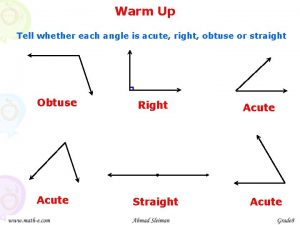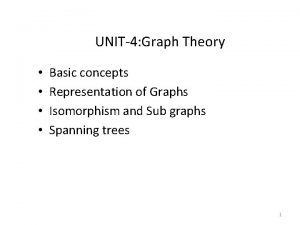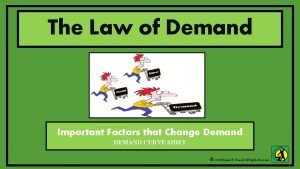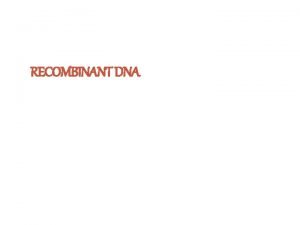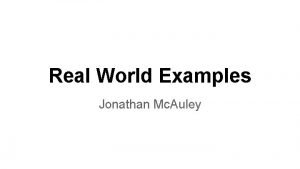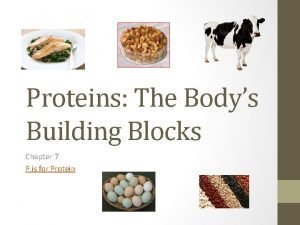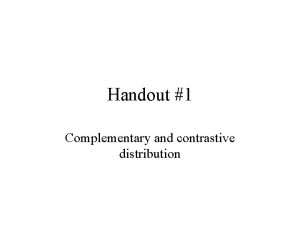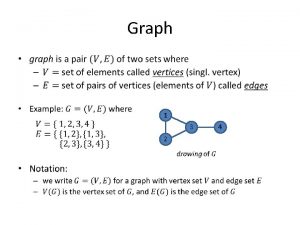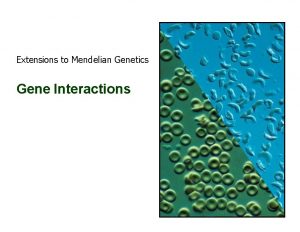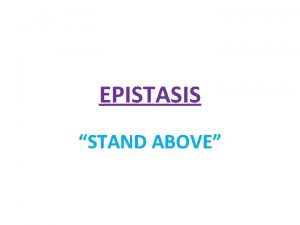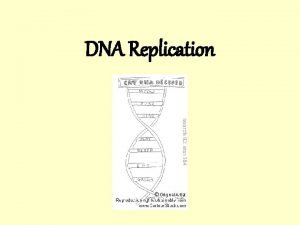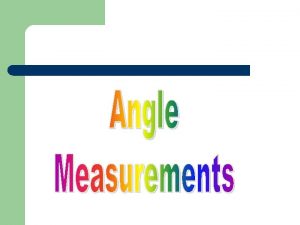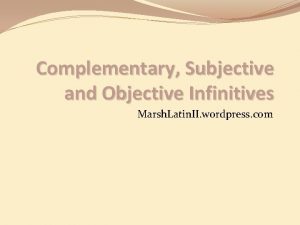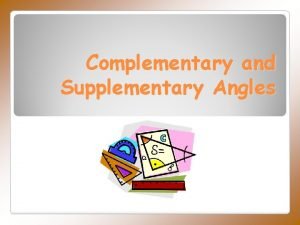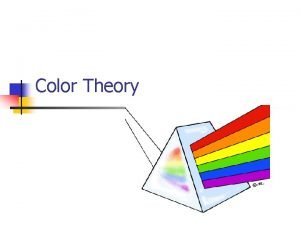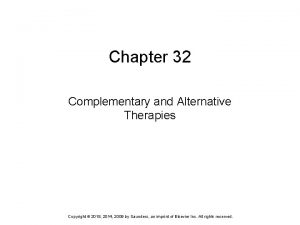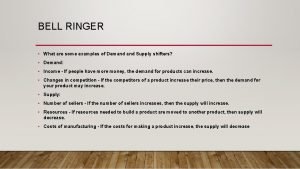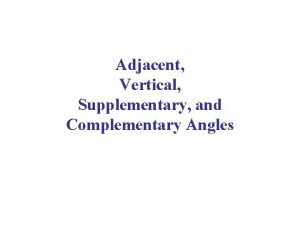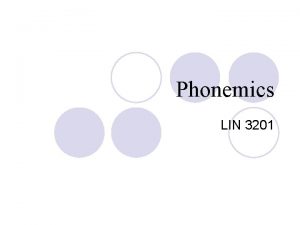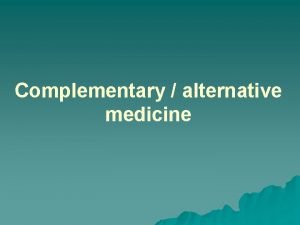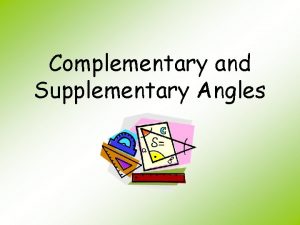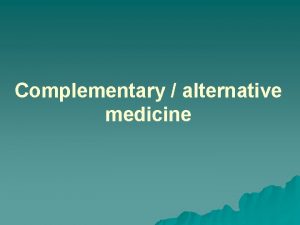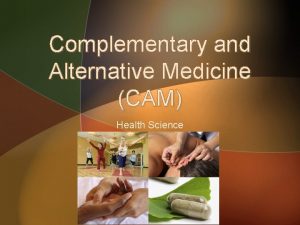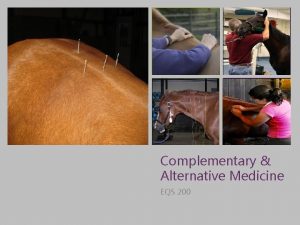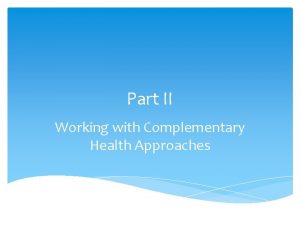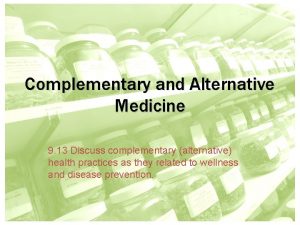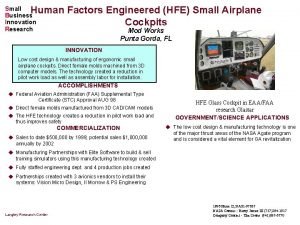QI HFE Complementary Practice March 2019 SPSPPC Improvement















































- Slides: 47

QI & HFE: Complementary Practice? March 2019 @SPSP_PC Improvement Hub Enabling health and social care improvement

Welcome Lindsay Wallace Improvement Advisor Primary Care Improvement Portfolio Improvement Hub Enabling health and social care improvement

Our Aim To deliver targeted improvement support to optimise care and service redesign across primary care in Scotland

Quality Improvement is defined as The application of a systematic approach that uses specific techniques to improve quality Health Foundation 2014

What is Scotland’s approach to Quality Improvement? Scottish Patient Safety Programme 2007 Improvement Route Map for Health & Social Care services 2011 Improvement Framework for Scotland’s public services 2013

All approaches have the following in common Cycle of improvement involving data collection, problem definition & diagnosis, generation & selection of potential changes, implementation & evaluation of these changes QI Recognition of importance of organisational context & senior clinical & management leadership Set of tools & techniques that support implementation of changes Recognition of central importance of engaging those who deliver the service in improvement of that service

Improvement journey

The Model for Improvement The ng inki Th Th ing e Do Part

Why is an aim statement important? Framework Focus Scale Team membership Communications.

First Define Your Rationale and Scope What’s the problem? How do you know? How big is the gap? Who will be affected? Strategic fit? Expected impact? Realistic timescale -why?

ENT iag ram Charts Se r Fe vice ed U ba se ck r e. D on hb Pareto Fis COR E TOO IMPRO LS VEM ng Pr oc s es a M i pp

The Three Questions What are we trying to accomplish? How will we know that a change is an improvement? What change can we make that will result in improvement?

Value Adding Activities What would allow us to do the work better? More efficiently? What do we need to do to eliminate waste? What do we need to do to ensure quality?

Waste the week after next • • Transportation Inventory Movement Waiting Overproduction Overprocessing Defects. Staff

Waste the week after next • • Transportation Inventory Movement Waiting Overproduction Overprocessing Defects. Your turn! With your neighbour how many service “wastes” can you think of?

ENT iag ram Charts Se r Fe vice ed U ba se ck r e. D on hb Pareto Fis COR E TOO IMPRO LS VEM ng Pr oc s es a M i pp

Value Adding Activities Do service users experience it? Do they want it to happen? Would they care if you changed it?

Making a cup of tea

What is a Fishbone Diagram?

Forcefield analysis Present state Forces for change Lewin 1943/1997 Desired state Forces against change

Forces 1 Aversion to changing shift patterns 2 Aware of improvement needed 3 Negative past experience with change 4 Personal needs not addressed 5 High level of commitment by management 6 High staff turnover 7 Resources are available for training For Against

System of Profound Knowledge Deming 2000

“Interdependent group of items, people, or processes working together toward a common aim”

To Improve It - We Must See The System As A Whole

What you know What some might know (and what most really need to find out) What you REALLY should know What you may never know THE UNKNOWN

The typical approach Conference Room DESIGN APPROVE Real World IMPLEMENT

The Quality Improvement approach Conference Room APPROVE DESIGN IF NECESSARY Real World TEST & MODIFY START TO IMPLEMENT

The Model for Improvement

The Three Questions What are we trying to accomplish? How will we know that a change is an improvement? What change can we make that will result in improvement?

Without DATA YOU are just another person with an OPINION Deming Measurement: why? To make improvement visible To plan To monitor progress To tell an improvement story To use a shared language

3 Step Framework: Create The Conditions 1 Aim Is there an agreed aim that is understood by everyone in the system? 2 Correct changes Are we using our full knowledge to identify the right changes and priorities those that are likely to have the biggest impact on our aim? 3 Clear change method Does everyone know and understand the method(s) we will use to improve? 4 Measurement Can we measure and report progress on our improvement aim? 5 Capacity and capability Are people and other resources deployed in the best way to enable improvement? 6 Spread plan Have we set our plans for innovating, testing, implementing and sharing new learning to spread the improvement everywhere it is needed?

Driver diagrams

Key features of driver diagrams Secondary driver Change idea Primary driver Secondary driver Change idea Aim Primary driver Secondary driver Change idea Primary driver Secondary driver Change idea Theory based on: Experience Knowledge Existing evidence

Primary care example *Three primary drivers

Driver Diagram: Tips on Facilitation Gather together the subject matter experts. Brainstorm “to achieve our aim the things we need to improve are. . . ” Cluster the ideas to see if groups represent a common driver. Expand the groups (or single ideas) to see if new drivers come to mind. Logically link together the groups into a driver diagram format. Work backwards from ideas of change if that helps.

Getting started with Measures Describe, in quantifiable terms, what to measure and the steps to follow to measure it consistently. Communicable meaning to a concept Clear and unambiguous Specifies measurement methods and equipment Identifies criteria

Data - Things to consider Who will be responsible for data collection? What is the data source / how will the data be collected? Frequency of data collection, and timings? Equipment needed to measure? How can data collection be integrated with work? What factors might influence the measure?

New Healthier Me: Lindsay’s personal project Aim To lose 10 lbs by the end of March 2019

New Healthier Me: Lindsay’s change ideas Cook evening meals from scratch Walk to a daily step target Reduce portion size Get up from desk to talk, instead of using phone or email Use gym at work at end of day No alcohol Monday to Thursday Keep to shoppin g list Max 1 juice or soft drink per day Replace biscuits and cakes with fruit Swim at least twice a week

Lindsay’s PDSA Parallel Ramps Only buy 7 cartons of juice via online order. Use smaller cereal bowl. Have a cup of black tea after dinner. Take no change to work to deter from using juice machine. Take water to work to stop buying extra juice. Have carton of juice at lunch only. Max 1 juice/soft drink per day Test Ramp 1 Began with a small change I could achieve. Lost a small amount of weight week 2 Test smaller plate at lunch. Add more veg and less carbo. Divide plate into protein/veg/carbo. Use a smaller dinner plate. Reduce portion size Test Ramp 2 I was not eating unhealthily but just too much. Tried smaller portions from week 3 rather than cutting out certain foods. Walk with dog to the forest at weekend Parking car in main car park. Walk of 5 mins to base Walking the dog an extra 10 mins in the evening Taking the stairs at work no lift allowed Baseline steps data gathered with pedometer Step target per day Test Ramp 3 At week 5 realised to increase the pace of weight loss I need to include more exercise

Three types of measure Outcome Tells a team whether the changes it is making are helping to achieve the stated aim Weight in pounds Process Tells a team whether a specific process change is having the intended effect Units of alcohol Mon to Thurs Balancing Makes sure that changes to improve one part of the system are not causing problems in other parts of the system Hours of sleep per night

s ces 2 Balan Pro cing A basket of measures e m Ptrcoocess 1 Ou

So is there a connection? • QIS and HFE developed from similar origins in the 20 th century • They diverged with QIS focussing more on process issues (eg, production quality control) and HFE focussing on wellbeing (occupational health and safety) and performance. • Both have been used in healthcare for many years, with several recent papers discussing confusion about jargon in one or both disciplines

Integrating QIS (quality improvement science) and HFE (human factors and ergonomics) professional practice. Sue Hignett et al. BMJ Qual Saf 2015; 24: 250 -254 Copyright © BMJ Publishing Group Ltd and the Health Foundation. All rights reserved.

So is there a link? • Much can be achieved by exploring how QI and HFE may be used synergistically (Hignett et al. 2015). • HFE, with its understanding of (1) human capabilities and limitations and (2) how humans interact with complex sociotechnical systems, is well placed to identify needs and develop interventions, • The scientific theory informing HFE practice can act as a discipline role model supporting QI as it matures, • while the broad acceptance of QI within healthcare can smooth the way for the arrival of wider HFE use. • a combined approach could explore real-life problems within the context of a complex sociotechnical system, to inform more meaningful design and evaluation of improvement interventions. Twelve tips for embedding human factors and ergonomics principles in healthcare education – Helen Vosper, Sue Hignett, Paul Bowie (2017)

Want to Learn More? Human factors and ergonomics and quality improvement science: integrating approaches for safety in healthcare – S Hignett et al (2014) IHI Quality Improvement Essentials Toolkit: http: //www. ihi. org/resources/Pages/Tools/Quality-Improvement-Essentials. Toolkit. aspx The Health Foundation: https: //www. health. org. uk/ NES TURAS: QI Zone - https: //learn. nes. nhs. scot/741/quality-improvement-zone HIS: http: //www. healthcareimprovementscotland. org/

Thank you for listening
 Hfe 7100
Hfe 7100 Anthem of poland
Anthem of poland Grihalakshmi magazine march 2019
Grihalakshmi magazine march 2019 Kaggle march madness
Kaggle march madness Myeplg
Myeplg Complementary opposites blake
Complementary opposites blake William blake performer heritage
William blake performer heritage Label each angle as acute obtuse or right
Label each angle as acute obtuse or right Two nonadjacent angles formed by two intersecting lines
Two nonadjacent angles formed by two intersecting lines Incident matrix in graph theory
Incident matrix in graph theory Articulation of phonemes
Articulation of phonemes Demand for complementary goods
Demand for complementary goods Colors
Colors Tools of recombinant dna technology
Tools of recombinant dna technology Complementary angles real life examples
Complementary angles real life examples Proteins the body's building blocks worksheet answers
Proteins the body's building blocks worksheet answers Generally speaking proteins that come from animal sources
Generally speaking proteins that come from animal sources Complementary distribution examples
Complementary distribution examples Peacock personality
Peacock personality Complementary colors
Complementary colors Vertical congruent angles
Vertical congruent angles Or rule probability
Or rule probability Foley manometer
Foley manometer Complementary distribution vs contrastive distribution
Complementary distribution vs contrastive distribution Self complementary graph
Self complementary graph What is split complementary color scheme
What is split complementary color scheme Andy fisher mun
Andy fisher mun Complementary gene action
Complementary gene action Complementary epistasis
Complementary epistasis Complementary strands of dna
Complementary strands of dna Complementary degree
Complementary degree Complementary infinitive latin examples
Complementary infinitive latin examples Principle of complementary feeding
Principle of complementary feeding Ways to remember complementary and supplementary angles
Ways to remember complementary and supplementary angles Color wheel of light
Color wheel of light Double split complementary
Double split complementary Reddish hue
Reddish hue Isaac newton color wheel
Isaac newton color wheel Double split complementary
Double split complementary What is split complementary color scheme
What is split complementary color scheme Chapter 32 complementary and alternative therapies
Chapter 32 complementary and alternative therapies Assimilation rules in phonology
Assimilation rules in phonology What is segmental phonology
What is segmental phonology Complementary goods
Complementary goods Vertical
Vertical Free variation and complementary distribution
Free variation and complementary distribution Quasi complementary symmetry push pull amplifier
Quasi complementary symmetry push pull amplifier Types of interpersonal attraction
Types of interpersonal attraction







